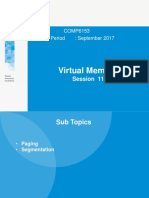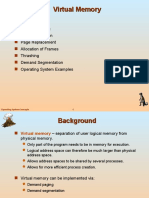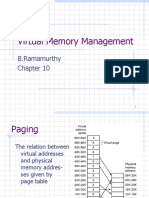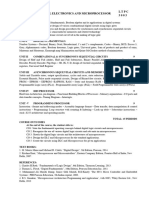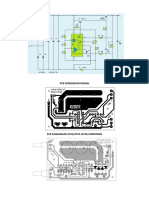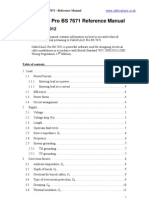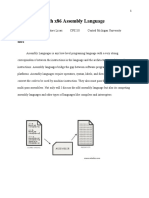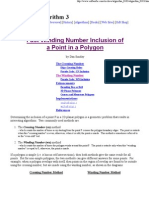0% found this document useful (0 votes)
81 views74 pagesCh03-Virtual Memory Memory Management
Virtual memory uses the hard disk to simulate additional RAM. Early schemes required programs to fit entirely in memory, but virtual memory allows programs to exceed physical memory limits. Demand paging loads only needed pages into memory from disk, reducing memory usage. It uses page tables and replacement policies to determine which pages to swap in or out when new pages are needed. When physical memory is full, the page fault handler uses policies like FIFO or LRU to select a page for removal to the disk to make room for the requested page.
Uploaded by
lheyha1986Copyright
© © All Rights Reserved
We take content rights seriously. If you suspect this is your content, claim it here.
Available Formats
Download as PPT, PDF, TXT or read online on Scribd
0% found this document useful (0 votes)
81 views74 pagesCh03-Virtual Memory Memory Management
Virtual memory uses the hard disk to simulate additional RAM. Early schemes required programs to fit entirely in memory, but virtual memory allows programs to exceed physical memory limits. Demand paging loads only needed pages into memory from disk, reducing memory usage. It uses page tables and replacement policies to determine which pages to swap in or out when new pages are needed. When physical memory is full, the page fault handler uses policies like FIFO or LRU to select a page for removal to the disk to make room for the requested page.
Uploaded by
lheyha1986Copyright
© © All Rights Reserved
We take content rights seriously. If you suspect this is your content, claim it here.
Available Formats
Download as PPT, PDF, TXT or read online on Scribd
/ 74



























